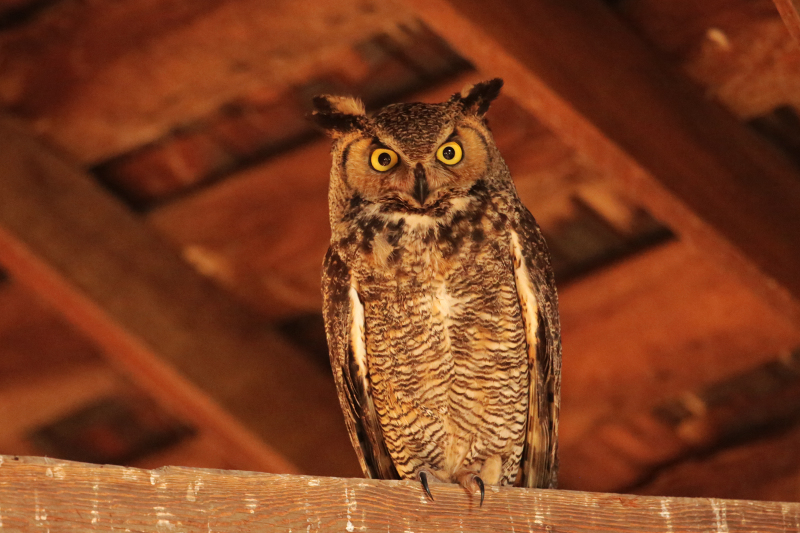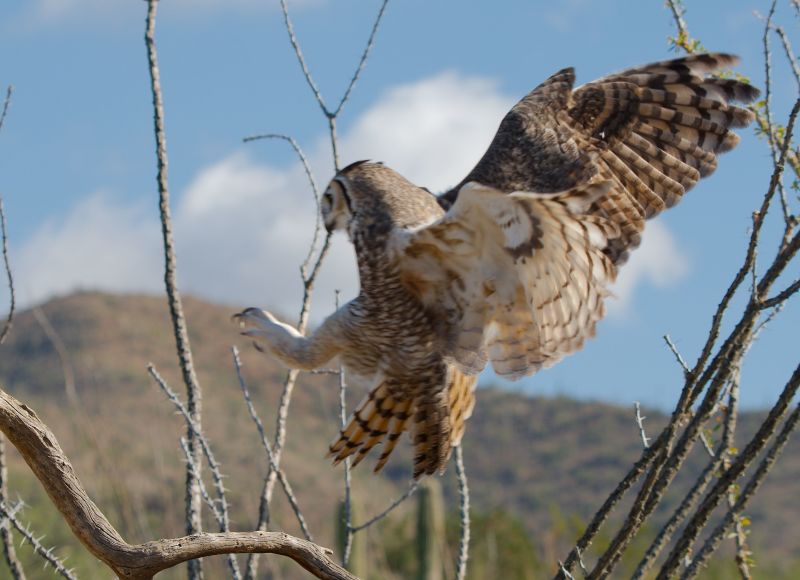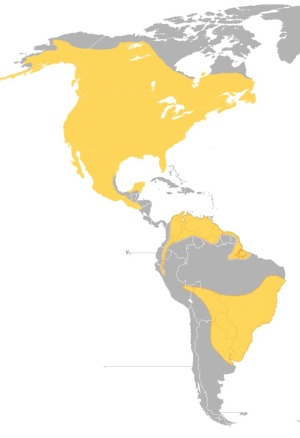Colours
Distinguishing features
The underparts are usually light with some brown horizontal barring; the upper parts and upper wings are generally a mottled brown usually bearing heavy, complex darker markings. All subspecies are darkly barred to some extent along the sides as well. There is a variable sized white patch on the throat. The white throat may continue as a streak running down the middle of the breast even when the birds are not displaying, which in particularly pale individuals can widen at the belly into a large white area. South American horned owls typically have a smaller white throat patch, often unseen unless actively displaying, and rarely display the white area on the chest.
There are individual and regional variations in overall color, with birds from the subarctic showing a washed-out, light-buff color, while those from the Pacific Coast of North America, Central America and much of South America can be a dark brownish color overlaid with blackish blotching.
The skin of the feet and legs, though almost entirely obscured by feathers, is black. Even tropical great horned owls have feathered legs and feet. The bill is dark gunmetal-gray, as are the talons.
They have a facial disc that is reddish, brown or gray in color (depending on geographical and racial variation) and is demarked by a dark rim culminating in bold, blackish side brackets. (Wikipedia)
Size
- Up to 64 cm (Length of specimen)
Wingspan
- Up to 153 cm
Synonyms
Distribution
Distribution and habitat preferences
They can take up residence in trees that border all manner of deciduous, coniferous, and mixed forests, tropical rainforests, pampas, prairie, mountainous areas, deserts, subarctic tundra, rocky coasts, mangrove swamp forests, and some urban areas.
They are distributed throughout most of North and very spottily in Central America and then down into South America south to upland regions of Argentina, Bolivia and Peru. (Wikipedia)
Audio recordings
Duetting great horned owls in a canyon with a small creek. The owls were calling from a south-facing slope above the creek.
© Lance A. M. Benner
(source)



